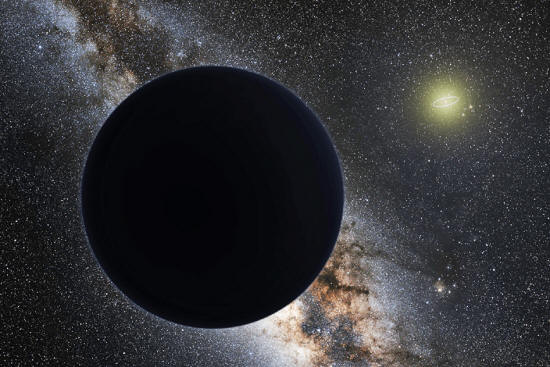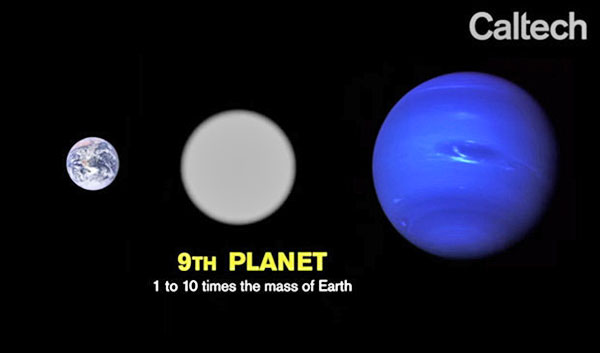|
by Pat Brennan from JPL-NASA Website of a possible ninth planet in our solar system, hovering at the edge of our solar system. Neptune's orbit is shown as a bright ring around the Sun. Credit: ESO/Tom Ruen/nagualdesign
If a planet is there, it's extremely distant and will stay that way (with no chance - in case you're wondering - of ever colliding with Earth, or bringing "days of darkness").
It is a possible "Planet
Nine" - a world perhaps 10 times the mass of Earth and 20
times farther from the sun than Neptune. The signs so far are
indirect, mainly its gravitational footprints, but that adds up to a
compelling case nonetheless.
Konstantin Batygin and his co-author, Caltech astronomer Mike Brown, described the first three breadcrumbs on Planet Nine's trail in a January 2016 paper (Observational Constraints on the Orbit and Location of Planet Nine in the Outer Solar System), published in the Astronomical Journal.
In fact, the tilt would be on the order of 90 degrees, as if the plane of the solar system and these objects formed an "X" when viewed edge-on.
Sure enough, Brown
realized that five such objects already known to astronomers fill
the bill.
This could explain a longstanding mystery:
The last telltale sign of Planet Nine's presence involves the solar system's contrarians:
Planet Nine's orbital influence would explain why these bodies from the distant Kuiper Belt end up "polluting" the inner Kuiper Belt.
The remaining step is to find Planet Nine itself.
Batygin and Brown are
using the
Subaru Telescope at Mauna Kea
Observatory in Hawaii to try to do just that. The instrument is the
"best tool" for picking out dim, extremely distant objects lost in
huge swaths of sky, Batygin said.
Batygin says he spends little time ruminating on its origin - whether it is a fugitive from our own solar system or, just maybe, a wandering rogue planet captured by the sun's gravity.
Other scientists offer a different possible explanation for the Planet Nine evidence cited by Batygin.
A recent analysis based on a sky mapping project called the Outer Solar System Origins Survey (OSSOS), which discovered more than 800 new "trans-Neptunian objects," suggests that the evidence also could be consistent with a random distribution of such objects.
Still, the analysis, from
a team led by Cory Shankman of the University of Victoria (Striking
Biases in the detection of large semimajor axis Trans-Neptunian
Objects), could not rule out Planet Nine.
Over the past 20 years,
surveys of planets around other stars in our galaxy have found the
most common types to be "super Earths" and their somewhat larger
cousins - bigger than Earth but smaller than Neptune.
|



